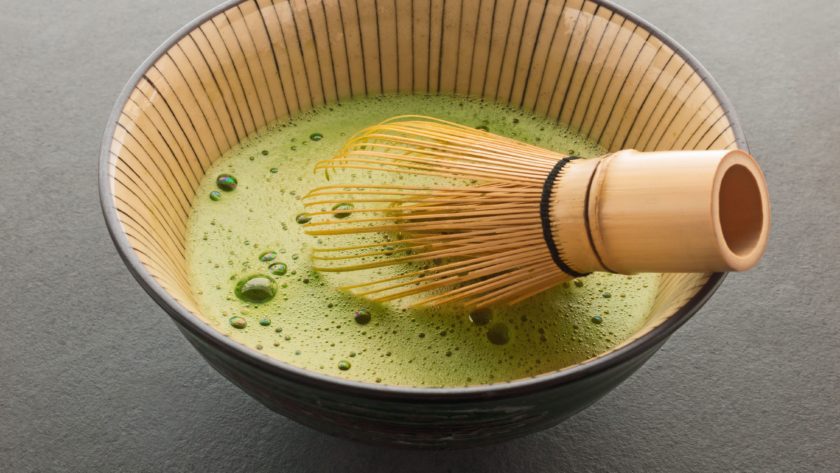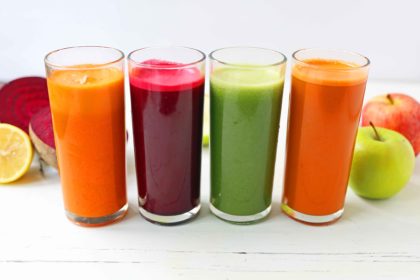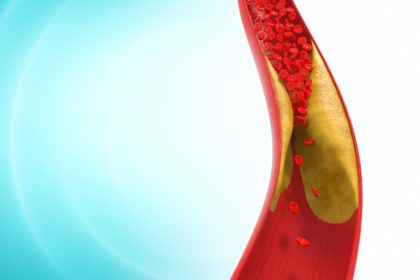
If you’re looking for a healthy alternative to the usual shamrock-shaded green beer to show your St. Patrick’s Day spirit, try matcha. Matcha (pronounced “MA-cha”) is a finely ground green tea powder that dates back to a 1,000-year-old Japanese tea ceremony. Preparing and serving matcha is a formal art in Japan and the health benefits of this green elixir have been striking.
The Magic of Matcha
Researchers consider green tea the healthiest beverage you can drink. Its health benefits have been studied since the 1990s due to their strong correlation between long life and health in many Asian cultures. Extensive studies on green tea revealed that it provides significant protection against:
- Cardiovascular disease heart disease (atherosclerosis)
- Low density lipoproteins (LDLs – the “bad” cholesterol)
- High blood pressure
- Congestive heart failure
- Stroke
Healthy, plaque-free blood vessels are good for your heart and what’s good for your heart is also good for your brain. An active, working brain requires sufficient blood flow.
Catechin Polyphenols
What makes matcha so beneficial? Something called polyphenols. Polyphenols are potent antioxidants and green tea contains polyphenols classified as “catechins” (pronounced KAT’-eh-kins).
Catechin polyphenols are found in the leaves of the Camellia sinensis plant that fight and may even prevent cell damage. Catechins are also found in red wine, chocolate, berries, and apples, but in smaller amounts compared to tea leaves.
Four types of tea come from the Camellia sinensis plant:
- Black
- Green
- Oolong
- White
Green tea undergoes much less processing than the other teas, so it contains more antioxidants as well as less caffeine. Specifically, these hand-picked green tea leaves are high in catechins (polyphenols) called epigallocatechin gallate (EGCG), which is the most active and most studied of the polyphenols.
How to Drink It
Matcha is made from high quality leaves and is jewel green in color. When drinking matcha, in contrast to drinking steeped green tea, you are drinking the whole leaf and not just the brewed water from the leaves. Therefore, when drinking matcha, you’re consuming 10 times the antioxidants, i.e., the health benefits in one cup of matcha is equivalent to 10 cups of green tea.
To drink it thin matcha or “Usucha”, one teaspoon (about 1.5 to 2 grams) of green powder is first whisked* with warm (about 158-176°F), not boiling, water. Use twice as much powder for thick matcha or “Koicha”. If the water is too hot, the tea can become quite bitter. Matcha has a rich, aromatic taste. Higher quality matcha has a finer texture and deep mellow taste. It is less astringent (bitter) and has a ‘greener’ (not hay-like) flavor than those of lower quality.
 *Matcha should be whisked back and forth (not in a circular pattern) with a chasen, a traditional bamboo whisk, until a gentle froth starts to form. Using the bamboo whisk is part of the aesthetic experience and although it’s not necessary, the matcha tastes better. I recommend getting one if you plan to continue enjoying the benefits of matcha.
*Matcha should be whisked back and forth (not in a circular pattern) with a chasen, a traditional bamboo whisk, until a gentle froth starts to form. Using the bamboo whisk is part of the aesthetic experience and although it’s not necessary, the matcha tastes better. I recommend getting one if you plan to continue enjoying the benefits of matcha.
NOTE: A study by Purdue University researchers found that vitamin C may help make the catechins easier to absorb. Lemon juice, followed by orange, lime and grapefruit juices, are most effective.
For Weight Loss
If you substitute 1-2 cups of matcha for your daily can of soda, you could save nearly 55,000 calories in a year. That’s more than 15 pounds!
A 12-week study published in the American Journal of Clinical Nutrition reports that drinking one bottle of green tea per day containing 690 mg* catechins helped the subjects shed more than six pounds and inhibit the formation of LDLs. LDLs are the “bad” cholesterol that increase your risk for developing atherosclerosis (clogging of the arteries).
*In Japan, the average daily consumption of green tea leaves is about 2 grams (0.07 oz) and 200-400 mg catechin.
Lead Contamination
Green tea plants absorb and accumulate lead from the soil and from contamination due to their proximity to highway exhaust and surface dust. The lead ends up being concentrated in the tea leaves. China is one of the biggest exporters of tea producing nearly 85% of the green tea in the world.
 However, China’s tea plants are grown in an area contaminated by heavy metals due to their excessive industrial pollution. Consequently, their tea plants are contaminated with high amounts of lead. Lead is a physiological and neurological toxin that can affect every organ and system in your body.
However, China’s tea plants are grown in an area contaminated by heavy metals due to their excessive industrial pollution. Consequently, their tea plants are contaminated with high amounts of lead. Lead is a physiological and neurological toxin that can affect every organ and system in your body.
So if you consume the whole leaf (as in matcha), be sure the tea comes from a non-polluted, high-quality source. The best matcha green tea comes from Japan. However, Japan produces less than 10% of the green tea in the world and exports just 0.6% of its tea. In a study published in the Journal of Toxicology, researchers found:
- No traces of lead in organic green tea from Japan
- High levels of lead were detected in organic green tea from China
The Calming Effect: Is It Real or the Ritual?
Green tea contains an amino acid (a building block for proteins) known as L-theanine. L-theanine is often used to treat anxiety and high blood pressure as well as prevent dementia and Alzheimer’s disease. Green tea is meant to be sipped slowly. This ritual in itself can help you relax and slow down which will augment the calming effect of the tea.
What to Know When Buying Matcha
There are varying grades of matcha based on where the leaves are picked and how they’re dried and ground. Higher quality grades of matcha use leaves that are picked from the very tip of the tea bush and shaded from direct sunlight for two months before harvest. This results in matcha that contains more chlorophyll because the tea leaves are forced to overproduce chlorophyll, thus, it has a richer and brighter green color.
 “Ceremonial” grade is expensive and the most pristine matcha you can find. There are many brands of matcha available now. So I asked my friend, Reverend Michael Endo, who participates in the art of Japanese tea ceremony for his favorites. He uses two brands from Japan: Ippodo and Koyamaen.
“Ceremonial” grade is expensive and the most pristine matcha you can find. There are many brands of matcha available now. So I asked my friend, Reverend Michael Endo, who participates in the art of Japanese tea ceremony for his favorites. He uses two brands from Japan: Ippodo and Koyamaen.- “Premium” or “in-between” grade is not as pricey as the ceremonial varietal, but is a step up from the cooking grades.
- “Culinary, cooking or kitchen grade” is made with less delicate tea leaves and is one-fifth to one-third the price of its ceremonial sisters. It has a stronger tea flavor that is too strong for drinking, but this grade allows its flavor to shine through in matcha-flavored desserts, cookies, cakes, smoothies, and lattes where it is mixed with other ingredients.
Is Drinking More Better?
Your body can only use so many antioxidants at a time and you should get a variety of antioxidants from your diet. These phytonutrients come from eating different plants, that is, fruits, veggies, and legumes. Matcha contains caffeine, so drinking unlimited amounts of matcha is not advised.
Matcha has about 34-68 mg of caffeine depending on whether you use ½ teaspoon or 1 teaspoon of matcha in your tea. A cup of steeped green tea leaves contains 32 mg caffeine. Compare this to 175 mcg caffeine in 8 oz of Starbucks® coffee. Since caffeine can interfere with deep (restorative) sleep, limit your caffeine intake to 500 mg/ day or less, and if you’re over 65 years old, limit to 250 mg/day or less for optimum health.

Be Aware! With the rise in matcha popularity, some of the benefits are nullified by the way they are prepared. For example…
- 16-oz Starbucks “Green Tea Latte” contains 2% milk and sugar racking up 240 calories
- 16-oz Starbucks “Green Tea Frappucino” contains a shocking 430 calories, 16 grams of fat (9 of which are saturated)
- A cup of pure matcha contains 3 calories
You also don’t know if the matcha in these commercial drinks is sourced from China which is known to be contaminated with lead. Culinary grade matcha is often used commercially since this more bitter grade is usually masked with other sweeteners and ingredients. It’s also less nutrient-rich and thus, less expensive.
If You’re Taking a Blood Thinner…
If you’re on warfarin (Coumadin), an anticoagulant, you have to carefully watch your vitamin K intake, since this vitamin works against warfarin by helping to clot your blood. Dried green tea leaves have a high concentration of vitamin K, but according to research published in the Journal of the American Dietetic Association in 1995, green tea is not a significant dietary source of vitamin K.
One cup of matcha green tea using ½-1 teaspoon (1-2 grams) tea powder yields 30-60 mcg. To put this in context, a cup of cooked kale contains 1,062 mcg of vitamin K and a cup of green beans contains 60 mcg of this vitamin. A cup of brewed green tea contains only 0.03 mcg of vitamin K.
Go (Naturally) Green
Instead of adding green food coloring (a petrochemical) to various foods for St. Patrick’s Day, add matcha green tea powder. Matcha, in its powder form, is a versatile, healthy and colorful green additive that can be added to desserts, pastries and beverages. The Japanese add matcha to ice cream (green tea ice cream), which has become popular in the U.S.
![]() Karen’s Fit Tip: Carefully check out your green tea source. You not only want to avoid lead contamination, but you want maximum catechin content. A study in the Journal of Food Science analyzed catechin content in green tea leaves stored at 20 degrees C (68 degrees F) for 1 week, 1, 2, 4, and 6 months. They determined that catechins, particularly EGCG, progressively degrade during storage.
Karen’s Fit Tip: Carefully check out your green tea source. You not only want to avoid lead contamination, but you want maximum catechin content. A study in the Journal of Food Science analyzed catechin content in green tea leaves stored at 20 degrees C (68 degrees F) for 1 week, 1, 2, 4, and 6 months. They determined that catechins, particularly EGCG, progressively degrade during storage.
Sources:
Effect of ground green tea drinking for 2 weeks on the susceptibility of plasma and LDL to the oxidation ex vivo in healthy volunteers. The Kobe Journal of Medical Sciences. 2008 May 23.
Citrus juice, vitamin C give staying power to green tea antioxidants. Molecular Nutrition and Food Research. 2007 Nov.
Scale and causes of lead contamination in Chinese tea. Environmental Pollution. 2006 Jan.
Ingestion of a tea rich in catechins leads to a reduction in body fat and malondialdehyde-modified LDL in men1,2,3. American Journal of Clinical Nutrition. 2005 Jan.





